In a Pickle is a strategic card game where players chain cards by fitting smaller items into larger ones, like a baby in a bathtub. Perfect for families, it combines fun and strategy, making it a great addition to any game night or casual gathering.
1.1 Overview of “In a Pickle”
In a Pickle is a strategic and engaging card game where players compete to create chains of cards by fitting smaller items into larger ones. The game revolves around logical thinking and quick decision-making, making it both fun and challenging. Players use word cards to build connections, such as “a baby in a bathtub” or “a pickle in a jar.” The goal is to outsmart opponents by creating the longest and most logical sequences. With its simple yet dynamic gameplay, In a Pickle is a great choice for family gatherings or casual card game sessions.
1.2 Brief History and Popularity
In a Pickle has gained popularity as a unique and engaging card game with a simple yet strategic premise. Originating as a family-friendly game, it has become a staple in many card game collections due to its universal appeal. The game’s popularity stems from its ability to combine logic and creativity, making it accessible to players of all ages. Over the years, it has been praised for its portability and ease of play, allowing it to be enjoyed in various settings, from casual gatherings to competitive events. Its enduring popularity highlights its timeless charm as a classic card game.
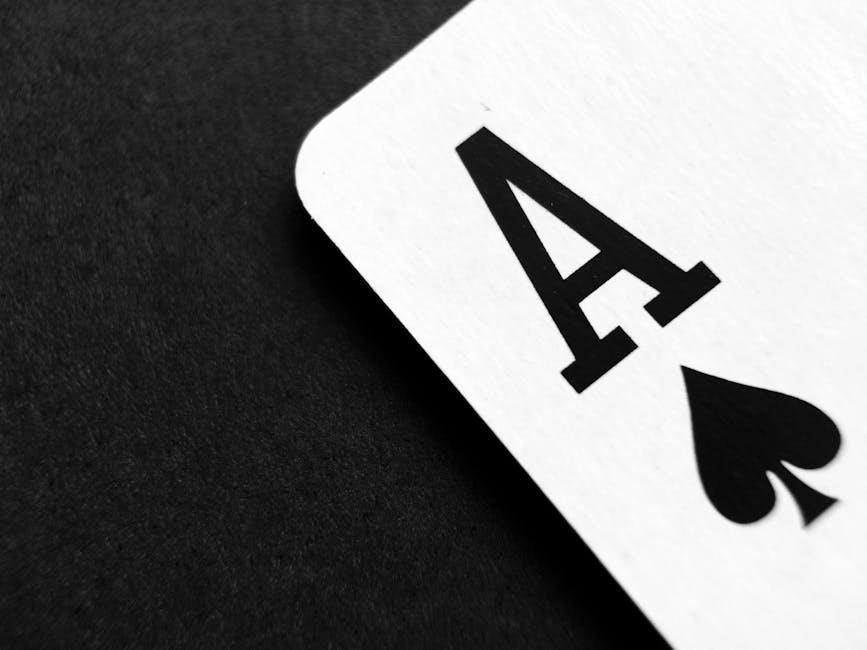
Equipment Required
A standard deck of 52 cards, including two jokers, is essential. The jokers play a crucial role in gameplay, adding an extra layer of strategy and fun.
2.1 The Deck Composition
A standard deck of 52 cards is used, including two jokers. The deck comprises four suits: hearts, diamonds, clubs, and spades, each with cards numbered from Ace to King. The jokers are essential and serve as wildcards, allowing players to create strategic connections between cards. The deck’s structure ensures a balanced mix of high and low cards, enabling players to chain smaller items into larger ones effectively during gameplay. Proper shuffling and dealing of this deck are crucial for a fair and enjoyable experience in “In a Pickle.”
2.2 Importance of Jokers in the Game
Jokers play a crucial role in “In a Pickle” as wildcards, providing flexibility and strategic depth. They can represent any card in the deck, allowing players to create connections between seemingly unrelated cards. This ability enhances gameplay by offering creative solutions and keeping the game dynamic. Jokers can turn a losing hand into a winning one, making them highly valued. Their inclusion ensures that players must think strategically about when and how to use these powerful cards effectively, adding an extra layer of challenge and excitement to the game.
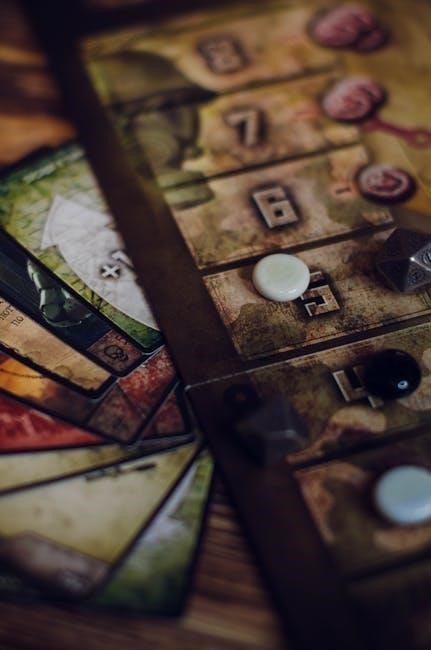
Setup and Initial Arrangement
The game begins by shuffling the deck and dealing five cards to each player. Four starter cards are placed face up on the table, forming the foundation for the game. The remaining cards are set aside as the draw pile, ready for players to use during their turns. This setup ensures a fair start and prepares the stage for strategic play.
3.1 Dealing the Cards
To start, the deck is shuffled, and seven cards are dealt to each player in a clockwise manner. This ensures a fair distribution and prepares players for the game. Each player receives their cards one at a time, allowing them to organize their hands strategically. The dealer then places four starter cards face up on the table, forming the initial rows for play. These starter cards serve as the foundation for building sequences, and players will use their dealt cards to extend these rows. Proper dealing is crucial for a smooth and enjoyable game experience for all participants.
3.2 Placing Starter Cards
After dealing, four starter cards are placed face up in the center of the table, forming the initial rows for play. These cards are positioned to create separate piles or sequences, setting the stage for the game. Each starter card serves as the foundation for building chains of related items. Players can then begin adding their cards to these rows by fitting smaller items into larger ones. The starter cards are essential for initiating the game, as they provide the starting points for all players to build upon. Their placement ensures a clear and organized beginning to the game.

Objective of the Game
The objective is to strategically place cards by fitting smaller items into larger ones, collecting sets to earn points and be the first to reach the target score.
4.1 Understanding the Goal
The primary goal of “In a Pickle” is to create sequences where smaller items logically fit into larger ones. Players aim to form these connections by strategically playing cards. This requires both creativity and quick thinking to outmaneuver opponents. The game encourages players to think hierarchically, linking everyday objects in a chain of containment or inclusion. For example, a key might fit into a door, which fits into a house. Understanding this core concept is essential for devising effective strategies and ultimately winning the game by accumulating the most points through successful sequences.
4.2 Scoring System Basics
Points in “In a Pickle” are awarded based on the size of the cards won in each round. The player who wins a round collects the played cards and earns points equal to the highest card’s value in the sequence. For example, if the highest card is a 10, the player receives 10 points. Bonus points are awarded for winning all rounds in a hand, adding 50 points to the winner’s total. The goal is to accumulate points by winning rounds and securing bonuses, with the target score typically set at 300 points to win the game.
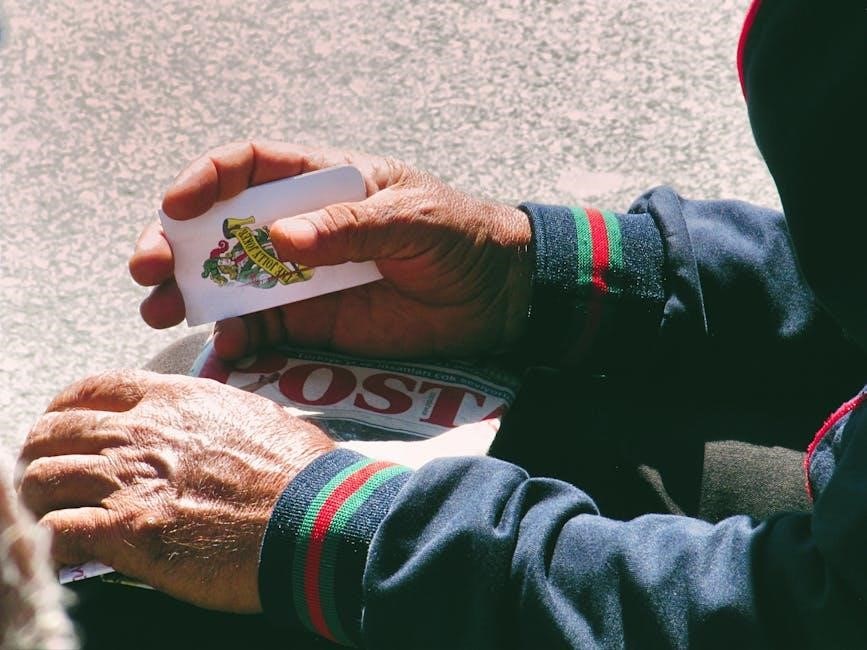
How to Play the Game
Players take turns playing cards to create sequences where smaller items fit into larger ones. The game starts with seven cards dealt to each player, and four starter cards placed face up. Players must play a card that fits the size-based criteria, either by being smaller or larger than the previous card. The player who wins a round collects the cards and earns points. The game continues until a player reaches the target score, typically 300 points, making them the winner.
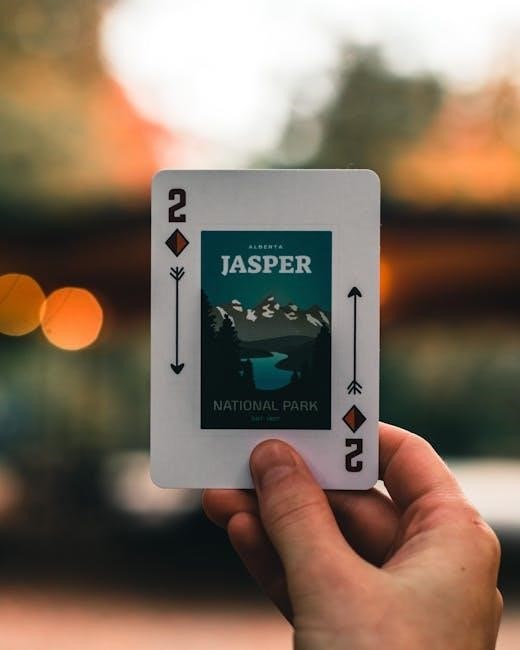
5.1 Starting the Game
The game begins by removing the jokers from the deck and shuffling the cards. Each player is then dealt five cards to form their hand. Four starter cards are placed face up on the table, serving as the foundation for the sequences. Players take turns playing a card from their hand that fits the size-based criteria, either being smaller or larger than the previous card. The goal is to create a chain where each item logically fits into the next. The game starts immediately after the cards are dealt, and the first player to create a valid sequence initiates the gameplay.

5.2 Playing the Cards
Players take turns placing a card from their hand that fits the size-based sequence, such as a pickle in a jar or a car in a garage. Each card played must logically fit into the chain, either being smaller or larger than the previous card. The card only needs to relate directly to the one it touches, not the entire sequence. If a player cannot play a card, they must pass their turn. The goal is to be the first to run out of cards, as this earns the most points. Strategy involves planning ahead to extend sequences and block opponents.
5.3 Winning a Round
A round is won by the player who plays the last valid card in a sequence. That player collects all the cards played in that round and places them face down in front of them. Points are assessed based on the cards collected, with numbered cards worth their face value and face cards (Jack, Queen, King) worth 10 points each. Jokers, if used, are worth 20 points. The goal is to accumulate points by winning rounds and reaching the target score of 300 points. The player with the most points at the end of all rounds is declared the winner.

Scoring and Points Assessment
Score points based on card values: numbered cards worth their number, face cards worth 10 points, and jokers worth 20 points.
The first player to reach a total of 300 points wins the game.
6.1 Points Calculation
Points are calculated based on the value of the cards collected during each round. Numbered cards are worth their face value, while face cards (Jack, Queen, King) are worth 10 points each. Jokers, being the highest, are worth 20 points; At the end of each round, the winner collects all the cards played and adds their values to their total score. The points are tallied cumulatively across multiple hands, and the first player to reach a total of 300 points is declared the winner. Strategic play is essential to maximize points and outpace opponents.
6.2 End-of-Hand Points Assessment
At the end of each hand, players calculate their points by summing the values of all cards they have collected. Numbered cards count as their face value, while face cards (Jack, Queen, King) are worth 10 points each. Jokers, being the highest, are valued at 20 points. The player with the highest total points at the end of the hand wins and adds those points to their overall score. If two players tie for the highest points, no points are awarded for that hand. This cumulative scoring system ensures that strategy and consistency are key to winning the game.

Winning the Game
The game is won by achieving a total score of 300 points. Players accumulate points over multiple hands, and the first to reach or exceed the target score wins.
7.1 Achieving the Target Score
To win In a Pickle, players must accumulate a total of 300 points. Points are earned by winning rounds and collecting cards. Each round’s winner gains points based on the number and rank of cards won. Consistent winning and strategic card placement are crucial. The game ends immediately when a player reaches or surpasses 300 points, making them the champion. This scoring system encourages players to aim for high-value cards and plan their moves carefully to maximize their score over multiple hands.
7.2 Final Round Rules
The final round commences once a player reaches or surpasses the target score of 300 points. Gameplay continues uninterrupted, allowing the leading player to solidify their win. The round concludes with the highest scorer declared the champion. This rule ensures a clear and decisive end to the game, preventing prolonged play beyond the target score.
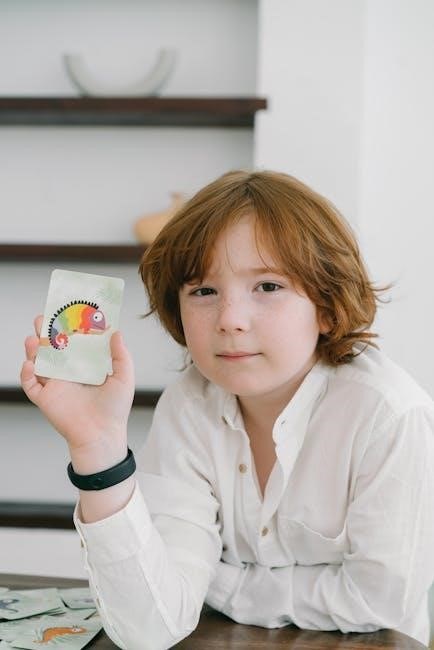
Tips and Strategies
Prioritize sequences for maximum points and play high-value cards strategically. Pay attention to the sequence of play to maximize your scoring opportunities. Organize your cards wisely to create multiple winning combinations, ensuring you stay ahead of your opponent. Stay observant to capitalize on their mistakes and secure your victory.
8.1 Effective Use of the Fourth Word Card
The fourth word card is crucial for extending sequences and maximizing points. Use it to connect larger items, like a house in a city, to create longer chains. By strategically placing this card, you can link multiple items, ensuring a higher score. Always aim to play it where it bridges gaps between otherwise unrelated cards, enhancing your chances of winning rounds and accumulating points efficiently.
8.2 Avoiding Common Mistakes
Avoid playing cards too quickly, as this can disrupt potential sequences. Never play a card that doesn’t logically fit the chain, as it may limit your future moves. Additionally, refrain from using high-value cards early, as they are more valuable when played later in the game. Players often overlook the importance of planning ahead, which can lead to missed opportunities. By staying attentive and strategically timing your plays, you can minimize errors and maximize your chances of winning. Avoiding these common pitfalls will enhance your gameplay and improve your overall performance in “In a Pickle.”
In a Pickle offers a delightful blend of strategy and fun, making it an excellent choice for family game nights or casual gatherings. Try it!
9.1 Summary of Key Points
In a Pickle is a card game where players chain cards by fitting smaller items into larger ones, like a baby in a bathtub. The game starts with a setup of four starter cards and a hand of five cards per player. Players aim to win rounds by playing the highest card in a row, collecting points based on the cards won. The goal is to reach a target score, typically 300 points, with strategic card play and avoiding mistakes. The game is simple yet engaging, making it a great option for family fun or casual gatherings.
9.2 Encouragement to Play
In a Pickle is a delightful and engaging card game that offers endless fun for players of all ages. Its simplicity makes it easy to learn, while its strategic depth ensures hours of entertaining challenges. Whether you’re a casual gamer or a competitive player, the game’s unique concept of chaining items from smallest to largest will keep you hooked. Gather friends or family, and enjoy the laughter and bonding that comes with every round. With quick rounds and a clear objective, In a Pickle is a perfect addition to any game night or casual gathering. Give it a try—you won’t be disappointed!
